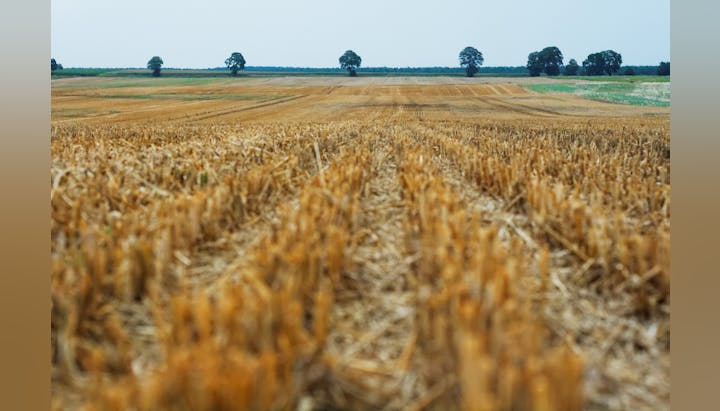Agriculture
History of Agriculture in Nevada County
The text below comes from Chapter 16 of Nevada County’s General Plan – revised 2012.
“Agriculture has always been an integral part of Nevada County and has continually grown and changed along with the county. The beginning of major agriculture pursuits began concurrently with the discovery of gold in California. With the sudden influx of miners there was also a need for food. This need, along with the high prices miners were willing to pay, made it attractive for farmers (many of whom had been miners) to start raising crops in the western end of the county. This area, with its mild climate and good soils, attracted a large number of farmers who grew a variety of crops, including fruit of all varieties, small grains, hay, potatoes, and wine grapes. Some citrus was attempted at the extreme southwestern corner of the county. Sheep and cattle were raised in large quantities, utilizing the high mountain ranges in summer and the oak woodlands for winter grazing…
One commodity, often not thought of as agriculture, that was harvested extensively in this period was timber. During the initial phase of placer mining, the demand was mainly for construction lumber. With the advent of hardrock mining, the demand for mining timbers expanded greatly, and much of the easy-to-reach virgin forest was cut at this time. Most of the timber in the western county today is second or third generation which reseeded from the initial stand.
During the 1800s and early 1900s, the most limiting feature for agriculture in the county was the lack of irrigation water. This was changed dramatically in 1921 with the formation of the Nevada Irrigation District. This was the first in a series of steps which culminated in reliable irrigation water being delivered to many county farmers. With the availability of irrigation water, the number of livestock increased sharply and dairies in particular began to flourish, as farmers were able to raise larger quantities of hay for feed. Agricultural production in the county reached a peak in total acreage and head of livestock during the period before World War II.
World War II changed the face of much of the agriculture in Nevada County. Many young men who had been sent to war found higher paying jobs waiting when they returned. The face of the land had also changed. Thousands of acres, including large parcels of irrigated pasture, were taken out of production by the expansion of Beale Air Force Base. Land was now more valuable for housing than for farming, and many large acreages were broken up into residential lots. The dairy industry also suffered as the need to modernize facilities dealt a financial blow to local dairymen. Fruit production, most notably Bartlett pears, remained a strong industry as noted by the 8,000 tons produced in 1958. However, the pear industry crumbled in the early 1960’s with the introduction of pear decline virus. By 1965 there were only 85 tons produced in Nevada County.
During the post World War II era, timber continued to be a strong industry. With thousands of acres of prime timber soils, and moderate climate, the county was able to produce millions of board feet of lumber a year to supply the increasing demand for lumber in the growing state.
The last 45 years have been a time of considerable change for agriculture in Nevada County. Land prices escalated rapidly and the pressure to subdivide large tracts of historical farmlands increased. However, there has also been an increase in the number of farms. From 1976 to 1982, farm numbers have increased 115 percent. The increase in farms has included a diversification of crops being raised. Many types of exotic livestock, including llamas, ostriches, colored sheep, and pot-belly pigs, as well as the more historical types of livestock, are raised in the county. Numerous fruit and nut crops are also raised with the wine grape industry attracting national attention. Other diversified agricultural businesses include specialty nurseries, herb farms, mushroom farms, aquaculture, Christmas tree farms, and fuelwood lots.
According to the 1987 Census of Agriculture, there were 386 farms in Nevada County (farm is defined as any place from which $1,000 or more of agricultural products were produced and sold, or normally would have been sold during the census year). This is an increase of 122% since 1974. While the number of farms has increased, the size of individual farms has declined 73% since 1974. The average size of a farm in Nevada County is 146 acres; 267 of them, or 69 percent, are less than 50 acres in size. According to the Nevada County Agriculture Commissioner’s Crop Report, agricultural income reached $20 million in 1989. This is an increase of 223% over the agricultural income of $6 million in 1982.
Much of this increase can be attributed to the increase in specialty crops being grown in the area. Fruit, vegetables, herbs, nurseries, Christmas trees, fish, and honey have all played a big role in this increase. Given the diverse nature of crops being grown in the County, agricultural income should continue to rise.”
Further discussion of the agricultural resources of the county is contained in Section 4: Open Space/Conservation Inventory, of Volume 2 of the Nevada County General Plan; and in Sections 3 and 7 of the Nevada County Master Environmental Inventory, which is part of Volume 3 of the Nevada County General Plan.













